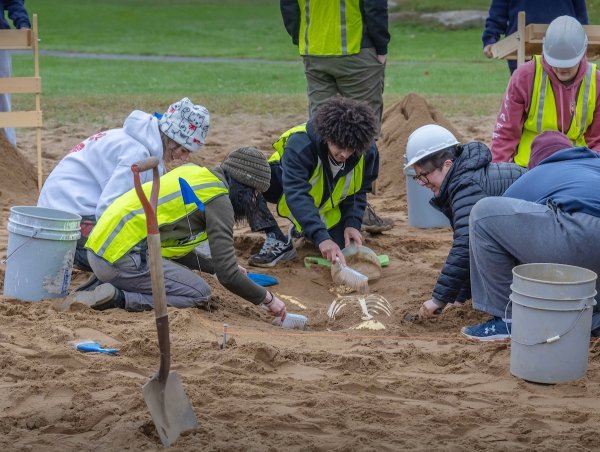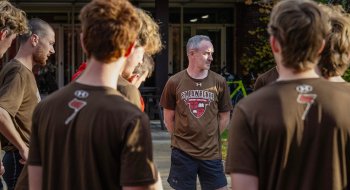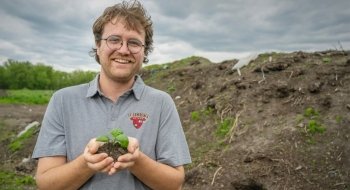Professor Mindy Pitre Unearths the Human Story
There’s hands-on learning, and then there’s Mindy Pitre’s classes. Whether it’s analyzing centuries-old human remains, or tracking decomposing animal carcasses to simulate forensic investigations, the associate professor and chair of anthropology takes real-world, experiential opportunities to the next level.
Pitre’s research has taken her from burial sites in St. Lawrence County to archaeological digs in Egypt and Sudan, often with students by her side. Her work has been covered by Forbes, National Geographic, and Discovery Channel, and has earned her a New York State Historic Preservation Award for excellence in archaeological stewardship.
But the impact of her work isn’t just in research; it’s in the transformative way she teaches anthropology.
In her Dealing with the Dead course, students study local cemeteries both in the field and in the archives, seeking answers to what life—and death—were like for people buried in upstate New York long ago. In her Forensic Anthropology class, students work in teams to study decomposition by burying, submerging, or exposing animal remains in order to simulate forensic casework.
“These are some of the most impactful learning opportunities for students,” says Pitre, emphasizing that all anthropology majors at St. Lawrence must complete an experiential learning component before they graduate.
The skills students develop in Pitre’s courses—critical thinking, teamwork, and investigative problem-solving—prepare them for careers in forensic science, museum curation, public health, and just about anything else. “Working in teams, developing a project, and following through—these are all transferable skills,” Pitre says.

To uncover the full story behind ancient remains, Pitre’s classes blend biological, cultural, linguistic, and historical perspectives—an approach she says is essential to understanding our shared humanity with people and places long-gone.
“Several scholars have remarked that anthropology is the most humanistic of the sciences and the most scientific of the humanities,” she explains.
With this combination of science and historical insight, Pitre and a student made a groundbreaking discovery: a 3,500-year-old Egyptian skeleton showed signs of rheumatoid arthritis, proving the disease existed in Africa far earlier than previously thought, helping to re-write medical history.
“By studying anthropology, students learn to think critically about themselves, their culture, identities and behaviors, and are provided an edge in terms of studying–and understanding–the human experience,” Pitre says.
“And it doesn’t hurt that it gives students the skills they need to navigate in today’s complex world.”



